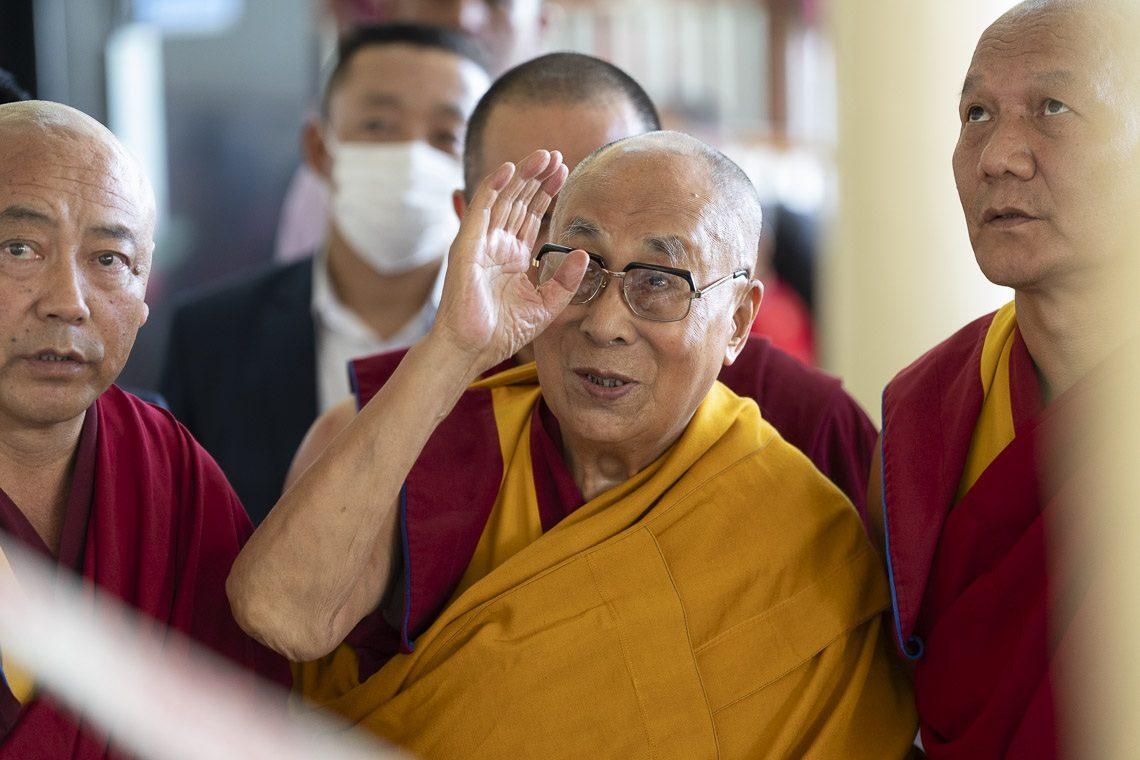The Dalai Lama, the spiritual leader of Tibet, has made a significant announcement regarding the future of Tibetan Buddhism. As he approaches his 90th birthday, he confirmed that the 600-year-old institution of reincarnation will continue beyond his lifetime. This declaration comes at a crucial time, as it directly challenges China’s claim to have the final say in selecting the next Dalai Lama. The Dalai Lama emphasised that the Gaden Phodrang Trust, an institution he established, is the sole authority responsible for recognising his future reincarnation. China, however, maintains a different stance. The Chinese Foreign Ministry, through spokesperson Mao Ning, reiterated that the reincarnation of the Dalai Lama must be approved by the central government in Beijing. Mao Ning stated, “Tibetan Buddhism was born in China and is a religion with Chinese characteristics.” She further explained that the reincarnation process must adhere to traditional methods, including the drawing of lots from a golden urn, a practice introduced by the Qing Dynasty in the 18th century. The Dalai Lama’s announcement was made during a three-day Buddhist religious conference in McLeodganj, a hill station near Dharamsala. He recalled a statement he made in 2011, where he outlined the process for recognizing his successor. According to this statement, the responsibility for identifying the next Dalai Lama rests exclusively with the Gaden Phodrang Trust, which will consult with the heads of Tibetan Buddhist traditions and reliable dharma protectors. The decision to continue the institution of reincarnation was influenced by numerous appeals from Tibetans both inside and outside Tibet, as well as from followers of Tibetan Buddhism worldwide. The Dalai Lama stated, “In accordance with all these requests, I am affirming that the institution of the Dalai Lama will continue.” This announcement has sparked a renewed debate over the future of Tibetan Buddhism and the role of China in the selection process. Amnesty International’s China Director, Sarah Brooks, described China’s efforts to control the selection of the next Dalai Lama as a “direct assault” on the right to freedom of religion. Penpa Tsering, the president of the Tibetan government-in-exile, highlighted the global support for the continuation of the Dalai Lama’s position. He noted that Tibetans from around the world made “an earnest request with single-minded devotion” for the institution to continue for the benefit of all sentient beings. The Dalai Lama, who fled Tibet in 1959 following a failed uprising against Chinese rule, has lived in exile in India for over six decades. His presence in India has been a point of contention between China and India, with Beijing viewing him as a separatist. Despite this, the Dalai Lama has continued to promote human values, religious harmony, and the preservation of Tibetan culture. Historical Methods and China’s Influence The Dalai Lama’s life has been marked by significant historical events. He was only 16 years old when Communist China invaded Tibet in 1950. At 19, he met with Chairman Mao in Beijing, and by 25, he was forced to escape to India, becoming a leader in exile. His journey to India was fraught with danger, as he disguised himself as a soldier to evade Chinese forces. In his latest book, “In Voice for the Voiceless,” the Dalai Lama reflects on his decades-long dealings with China and the ongoing struggle for Tibetan freedom. The book offers insights into the challenges faced by Tibetans in their homeland and the existential crisis of a nation in exile. The Dalai Lama’s announcement has also brought attention to the historical methods of selecting Tibetan spiritual leaders. Traditionally, the reincarnation of a Lama, especially the Dalai Lama, is recognized through a sacred process involving visions, signs, and deep spiritual rituals. This process is not merely an appointment but a recognition of the spiritual successor. China’s insistence on using the golden urn method, a practice introduced by the Qing Dynasty, is seen by many as an attempt to exert control over Tibetan Buddhism. This method involves drawing lots from a golden urn to determine the reincarnation of high-ranking Buddhist figures, a practice that has been incorporated into China’s official regulations since 2007. The Dalai Lama’s decision to continue the institution of reincarnation without Chinese interference is a significant assertion of Tibetan autonomy. It underscores the deep-rooted cultural and spiritual traditions of Tibet, which have persisted despite decades of political turmoil. As the Dalai Lama approaches his 90th birthday, his announcement has provided a sense of continuity and hope for Tibetans and followers of Tibetan Buddhism worldwide. It reaffirms the resilience of the Tibetan spirit and the enduring legacy of the Dalai Lama as a symbol of peace and compassion. Related
